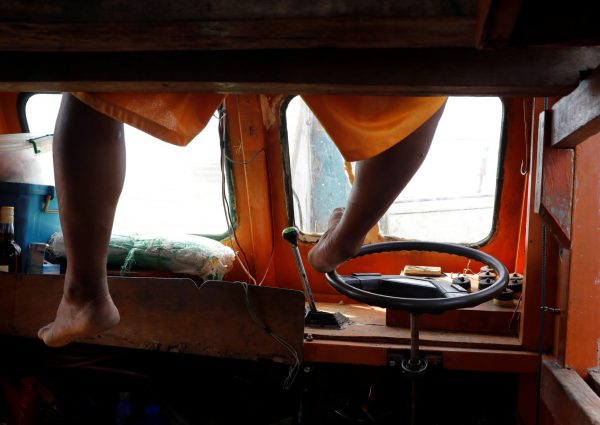At their 50th ministerial meeting in Manila on 5 August 2017, the 10 ASEAN foreign ministers ‘warmly welcomed’ improving cooperation between ASEAN and China. Their communiqué took note of some countries’ concerns regarding land reclamations and ‘emphasized the importance of non-militarisation and self-restraint’, but did not reference the Philippines–China arbitration award.
For ASEAN and China, the issuance of the award on 12 July 2016 constituted the closing of a tense chapter in their recent interactions and the opportunity to turn a new page of cooperation. That post-July 2016 cooperation has been manifested in the successful testing of a foreign ministry-to-ministry hotline to manage maritime emergencies, the operationalisation of observance of the Code for Unplanned Encounters at Sea (CUES) and the drawing up of a framework of a code of conduct in the South China Sea.
ASEAN–China political relations are not as fraught or hyped as they are often portrayed to be. Every ASEAN member — with the possible exception of Singapore — prioritises the success of ASEAN–China ties, but not at the inadmissible cost of capitulating to Beijing’s expansive sovereign rights claims to oil and gas resources in the South China Sea.
The turning of the wheel in favour of stability and cooperation is also consistent with a discernible pattern of easing and deterioration in ASEAN–China relations over the past quarter-century. Four such cycles are evident: two deteriorating cycles between 1992–1999 and 2009–2016, and two easing cycles between 2002–2008 and the current cycle that began in July 2016. Although no two easing or deteriorating cycles are identical, they have two identifiable features.
First, during deteriorating cycles China has slapped down controversial maritime rights claims, which have been accompanied by subsequent actions visibly disturbing the status quo. In 1992, China promulgated its Law on the Territorial Sea and the Contiguous Zone and followed up by constructing structures on the Philippines’ continental shelf at Mischief Reef in 1995. In 2009, China officially appended a map of the nine-dash line and followed it up with a series of large-scale land reclamations from mid-2013 onwards in response to Manila filing the arbitration case.
The role of the United States is usually elevated during deteriorating cycles. Its notable diplomatic interventions in May 1995 and July 2010 and loudly advertised freedom of navigation operations have each occurred during tense periods. Without an agitated local claimant on whose behalf it can intervene to uphold stability in the South China Sea — and Vietnam doesn’t quite fit the bill yet — Washington has few tools at its disposal to assert its political relevance in this body of water other than endlessly navigate its length and breadth.
Second, the Philippines has felt the most violated among the claimant states by China’s actions, yet has been the most capricious in its policy responses. There have been stark pro-and anti-China pendulum swings, coinciding with the elevation of new presidents dating back to Gloria Arroyo in 2001, which have amplified these cycles. This has also hurt ASEAN’s ability to speak with one voice.
Easing cycles have lent themselves to imaginative approaches to jointly explore hydrocarbon resources, such as the 2005 Joint Marine Seismic Undertaking (JMSU) involving the Philippines, China and Vietnam. But unlike the case of the JMSU, China–Philippines energy cooperation during this current cycle cannot be structured as a sovereign state-to-state agreement and will have to be conducted in accordance with the Philippines’ relevant laws. Japan’s in-principle consensus to jointly develop an existing oil and gas field along the hypothetical median line in the East China Sea within the framework of China’s domestic law could serve as a model.
Looking ahead, Filipino President Rodrigo Duterte’s readiness to forego near-term implementation of the arbitration award and his insistence on scaling back naval cooperation with the United States in the South China Sea has unlocked an important opportunity for Beijing and Manila to move beyond managing their differences to resolving them. The onus is now on China to imperceptibly bring its practices into compliance with aspects of the arbitration award. There are creative means to do so.
Building on its readiness to allow the return of traditional fishermen to the Scarborough Shoal, China should cease enforcing its summer-time fishing moratorium in the northern sector in areas beyond its territorial sea limits. China should also withdraw its paramilitary presence from the vicinity of the Second Thomas Shoal, which is a low-tide elevation on the Philippines’ continental shelf.
Over time, if joint oil and gas development is successfully realised, Beijing and the Duterte government should devise a condominium arrangement to govern the administration of Mischief Reef. Beijing should also clarify that the ‘historic rights’ it pursues within the nine-dash line are limited solely to a non-exclusively exercised right to living resources for its artisanal fishermen. And on this basis, it should cease interference with all oil and gas development-related activity beyond the 200-nautical mile radius of Woody Island, the largest island in the Paracels group that it has continuously administered since the mid-1950s.
In parallel, ASEAN and China should devise a multilayered code of conduct that covers claimant and non-claimant states alike, is comprehensive in scope in terms of activities covered, subjects its signatories to binding regional dispute settlement, and encourages extra-regional partners to adhere and accede to its purposes.
Sourabh Gupta is Senior Fellow at Institute of China–America Studies, Washington DC.

